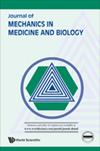开发智能1rm测量系统改善老年人骨骼肌功能
IF 0.6
4区 医学
Q4 BIOPHYSICS
引用次数: 0
摘要
在本研究中,我们旨在为活跃的老年人提供安全的、自动服务的运动,以方便他们获得运动,开发应用电子负荷的智能一次最大重复(Smart One Repetition Maximum, 1RM)测量系统,减少伤害,并通过准确评估身体功能和运动效果来优化运动效果。本研究开发了一种智能的、定制的运动和1RM测量系统,以改善和维持健康老年人的日常生活能力。该系统采用动力制动器,为老年人提供安全而详细的运动负荷,包括六种类型的运动,包括腿部伸展,腿部按压,长拉,大腿内外,腹部和胸部按压练习。本研究的对象是30名65岁或以上的成年人,他们在过去6个月内没有肌肉骨骼或神经系统疾病史,并参加了光州市的老年人健身中心。在运动前使用久坐自行车进行20分钟的全身有氧运动[公式:见文本]。运动负荷是在评估前测量的1RM的基础上换算30RM的体重来计算的。练习包括胸压、长拉、腹屈、髋内收、腿伸和腿压。所有运动均为30次为一组,每天3组,每周3-5次,运动之间休息5分钟[公式:见文]。实验结果表明,所有运动方式的最大肌力均显著增加([公式:见文]),对老年人有安全的肌力增强效果。这些结果表明,本研究中开发的智能定制运动系统可以积极地导致老年人肌肉力量的安全增加。本文章由计算机程序翻译,如有差异,请以英文原文为准。
Development of smart 1rm measurement system to improvement of skeletal muscle function of the elderly
In this study, we aimed to provide safe exercises with automatic service for easy access to active seniors, develop Smart One Repetition Maximum (1RM) measurement system applying electronic load that can reduce injuries, and optimize exercise effects by accurately evaluating physical functions and exercise effects. In this study, a smart, customized exercise and 1RM measurement system was developed to improve and maintain the daily living ability of healthy older adults. This system applies a power brake to provide a safe and detailed exercise load for older adults and consists of six types of exercises, including leg extension, leg press, long pull, in and out thigh, abdominal, and chest press exercises. The subjects of this study were 30 adults aged 65 years or older who had no history of musculoskeletal or nervous system disorders in the past 6 months and who attended an elderly fitness center in Gwangju city. Whole-body aerobic exercise was performed using a sedentary bicycle for 20[Formula: see text]min before exercise. Exercise load was performed by converting the weight of 30RM based on the 1RM measured before evaluation. The exercises were chest press, long pull, abdominal flexion, hip adduction, leg extension, and leg press. All the exercises were performed 30 times in a set, three sets a day, 3–5 times a week, with 5[Formula: see text]min of rest between workouts. As a result of the experiment, the maximum muscle strength for all exercise modes increased significantly ([Formula: see text]), and a safe muscle strength enhancement effect for the elderly was observed. These results suggest that the smart, customized exercise system developed in this study can positively result in a safe increase in the muscle strength of the elderly.
求助全文
通过发布文献求助,成功后即可免费获取论文全文。
去求助
来源期刊

Journal of Mechanics in Medicine and Biology
工程技术-工程:生物医学
CiteScore
1.20
自引率
12.50%
发文量
144
审稿时长
2.3 months
期刊介绍:
This journal has as its objective the publication and dissemination of original research (even for "revolutionary concepts that contrast with existing theories" & "hypothesis") in all fields of engineering-mechanics that includes mechanisms, processes, bio-sensors and bio-devices in medicine, biology and healthcare. The journal publishes original papers in English which contribute to an understanding of biomedical engineering and science at a nano- to macro-scale or an improvement of the methods and techniques of medical, biological and clinical treatment by the application of advanced high technology.
Journal''s Research Scopes/Topics Covered (but not limited to):
Artificial Organs, Biomechanics of Organs.
Biofluid Mechanics, Biorheology, Blood Flow Measurement Techniques, Microcirculation, Hemodynamics.
Bioheat Transfer and Mass Transport, Nano Heat Transfer.
Biomaterials.
Biomechanics & Modeling of Cell and Molecular.
Biomedical Instrumentation and BioSensors that implicate ''human mechanics'' in details.
Biomedical Signal Processing Techniques that implicate ''human mechanics'' in details.
Bio-Microelectromechanical Systems, Microfluidics.
Bio-Nanotechnology and Clinical Application.
Bird and Insect Aerodynamics.
Cardiovascular/Cardiac mechanics.
Cardiovascular Systems Physiology/Engineering.
Cellular and Tissue Mechanics/Engineering.
Computational Biomechanics/Physiological Modelling, Systems Physiology.
Clinical Biomechanics.
Hearing Mechanics.
Human Movement and Animal Locomotion.
Implant Design and Mechanics.
Mathematical modeling.
Mechanobiology of Diseases.
Mechanics of Medical Robotics.
Muscle/Neuromuscular/Musculoskeletal Mechanics and Engineering.
Neural- & Neuro-Behavioral Engineering.
Orthopedic Biomechanics.
Reproductive and Urogynecological Mechanics.
Respiratory System Engineering...
 求助内容:
求助内容: 应助结果提醒方式:
应助结果提醒方式:


